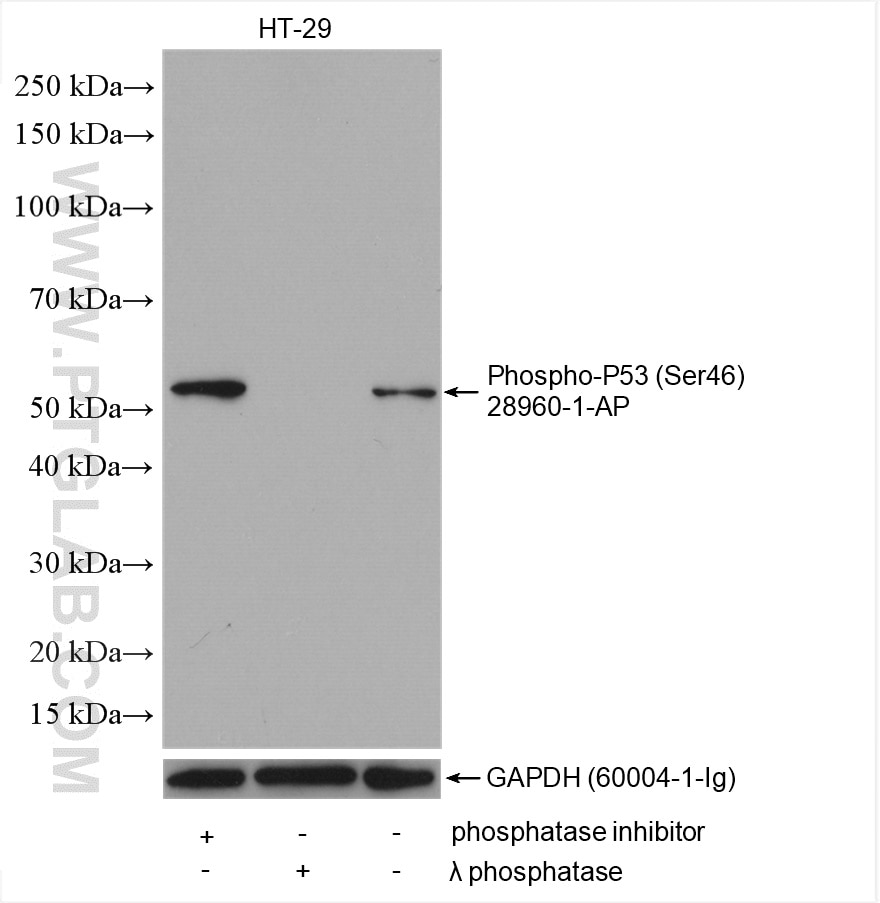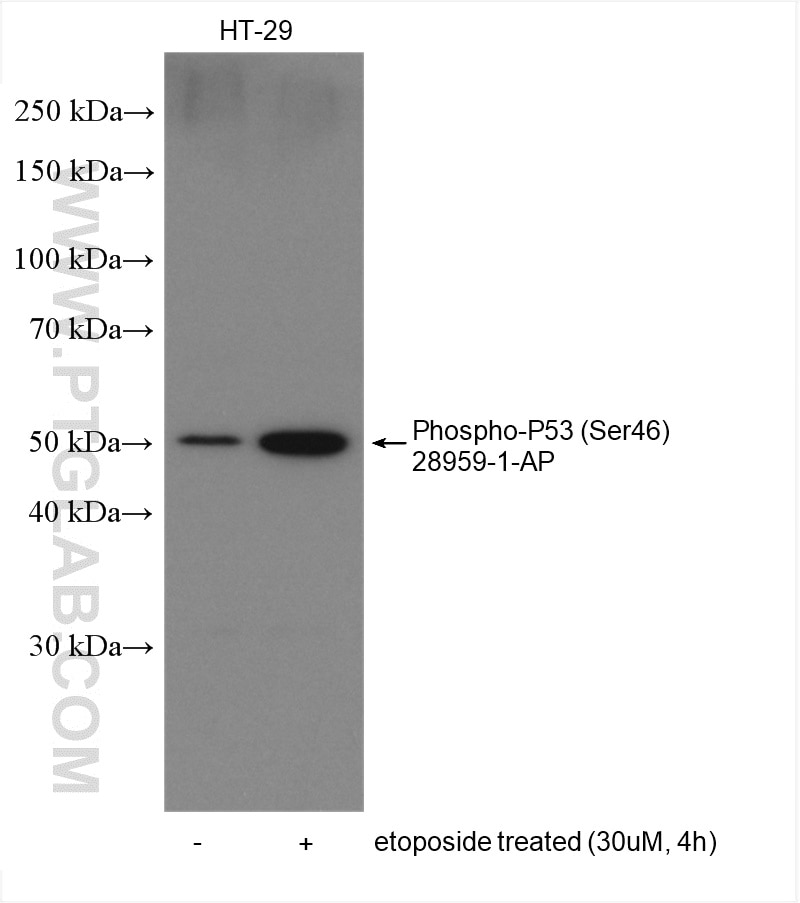Tested Applications
| Positive WB detected in | HT-29 cells, λ phosphatase treated HT-29 cells |
Recommended dilution
| Application | Dilution |
|---|---|
| Western Blot (WB) | WB : 1:1000-1:4000 |
| It is recommended that this reagent should be titrated in each testing system to obtain optimal results. | |
| Sample-dependent, Check data in validation data gallery. | |
Published Applications
| WB | See 8 publications below |
Product Information
28960-1-AP targets Phospho-P53 (Ser46) in WB, ELISA applications and shows reactivity with Human samples.
| Tested Reactivity | Human |
| Cited Reactivity | human, mouse |
| Host / Isotype | Rabbit / IgG |
| Class | Polyclonal |
| Type | Antibody |
| Immunogen |
Peptide Predict reactive species |
| Full Name | tumor protein p53 |
| Calculated Molecular Weight | 44 kDa |
| Observed Molecular Weight | 53 kDa |
| GenBank Accession Number | BC003596 |
| Gene Symbol | P53 |
| Gene ID (NCBI) | 7157 |
| RRID | AB_2918223 |
| Conjugate | Unconjugated |
| Form | Liquid |
| Purification Method | Antigen affinity purification |
| UNIPROT ID | P04637 |
| Storage Buffer | PBS with 0.02% sodium azide and 50% glycerol, pH 7.3. |
| Storage Conditions | Store at -20°C. Stable for one year after shipment. Aliquoting is unnecessary for -20oC storage. 20ul sizes contain 0.1% BSA. |
Background Information
The p53 tumor suppressor protein plays a major role in cellular response to DNA damage and other genomic aberrations. Activation of p53 can lead to either cell cycle arrest and DNA repair or apoptosis. Phosphorylation of p53 at Ser46 regulates the ability of p53 to induce apoptosis. Homeodomain-interacting protein kinase 2 (HIPK2) Phosphorylates Ser46 off p53 and p38 can phosphorylate this site .
Protocols
| Product Specific Protocols | |
|---|---|
| WB protocol for Phospho-P53 (Ser46) antibody 28960-1-AP | Download protocol |
| Standard Protocols | |
|---|---|
| Click here to view our Standard Protocols |
Publications
| Species | Application | Title |
|---|---|---|
Apoptosis High-dose copper activates p53-independent apoptosis through the induction of nucleolar stress in human cell lines. | ||
Exp Cell Res RPS14 promotes the development and progression of glioma via p53 signaling pathway | ||
Mol Cell Probes Long noncoding RNA RMRP ameliorates doxorubicin-induced apoptosis by interacting with PFN1 in a P53-Dependent manner | ||
Tissue Cell DEPDC1B enhances malignant phenotypes of multiple myeloma through upregulating CCNB1 and inhibiting p53 signaling pathway | ||
Cell Biol Int LRP8 promotes tumorigenesis in ovarian cancer through inhibiting p53 signaling | ||
Toxicology Exploring the Multifaceted Impact of Lanthanides on Physiological Pathways in Human Breast Cancer Cells |






